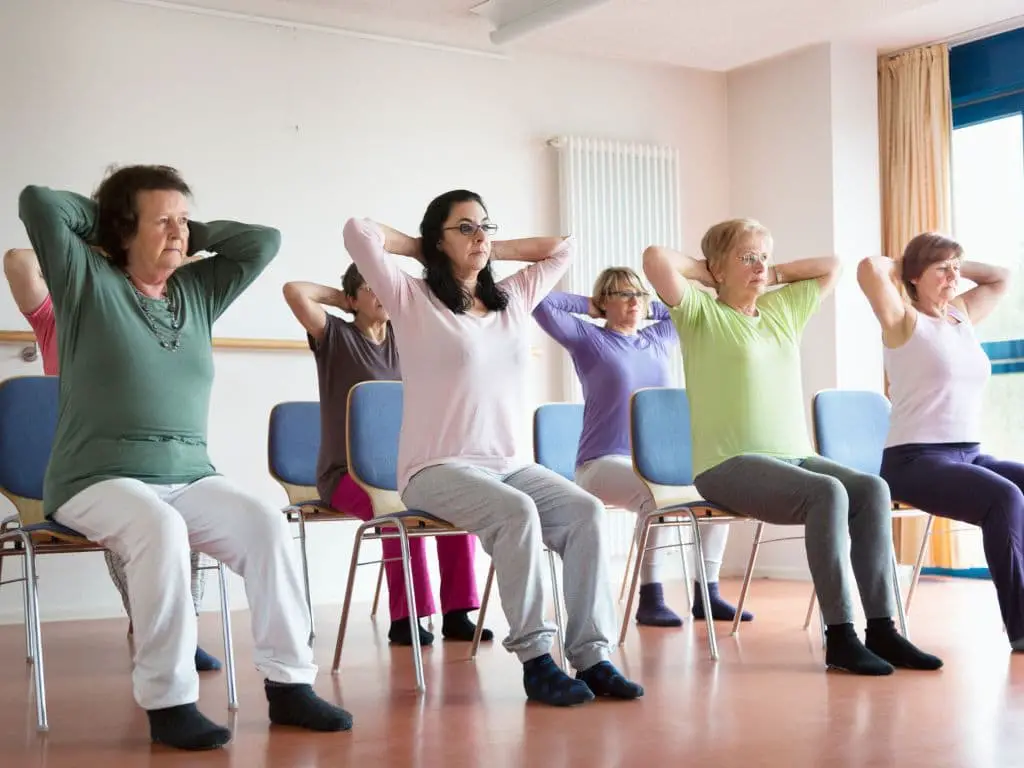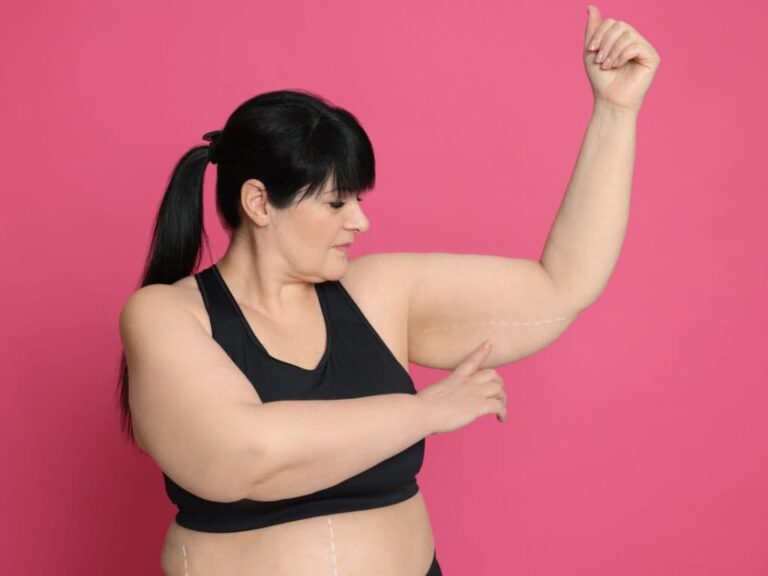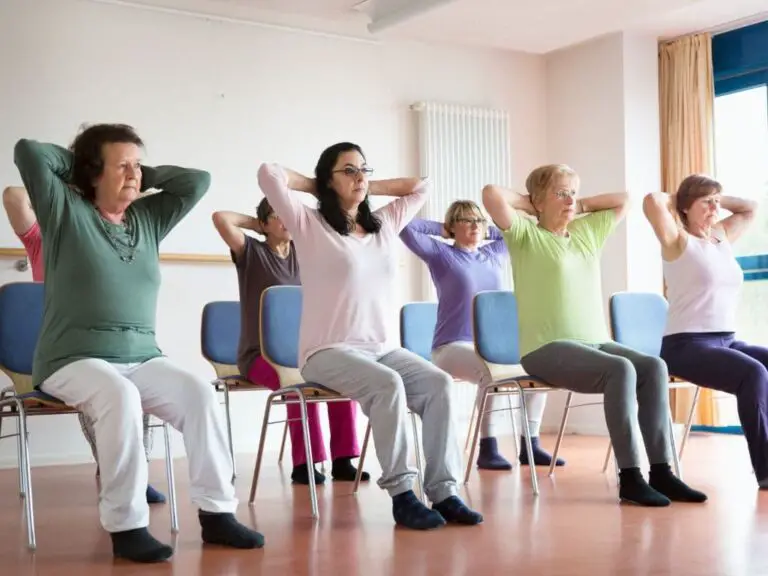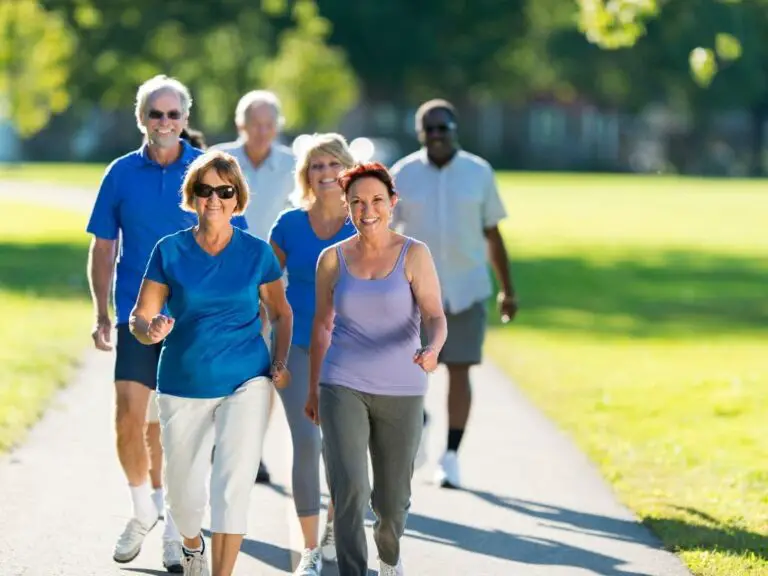Chair Yoga for Seniors: A Comprehensive Guide
Chair yoga is a unique form of yoga that is modified with props like chairs to make it gently accessible for seniors and people with limited mobility. Chair yoga allows seniors to enjoy the benefits of yoga without having to move up and down from the floor. It’s a great way for seniors to stay active in a safe, low-impact way.
What are the best chair yoga exercises for seniors? Seated cat-cow, seated twist, and seated forward bend are considered excellent chair yoga exercises for seniors. They improve spinal flexibility and range of motion. Warrior I and II build lower body strength. Extended side angle stretch targets hips and obliques. Balance poses like tree pose enhance stability. Savasana relaxation is ideal for reducing stress and tension. These gentle, adaptable exercises provide multiple benefits.

What Is Chair Yoga?
Chair yoga is a modified style of yoga that is practiced sitting on a chair, or using a chair for support during standing poses. The chair replaces the yoga mat and allows seniors to perform poses and stretches with more stability and comfort.
Chair yoga adapts many yoga poses so they can be done while seated or using a chair to assist balance and alignment. Standing postures like mountain pose or tree pose are performed holding onto the chair. The chair provides extra support and safety.
Many of the traditional yoga poses like warrior and triangle pose are done using the chair. The chair allows seniors to maximize the benefits of poses without strain or risk of falling. Chair yoga helps increase strength, flexibility, and range of motion.
The pace of chair yoga is slower than traditional yoga. Focus is placed on breathing and mindful movement rather than flexibility or fitness. It’s an accessible yoga practice for seniors of all levels of mobility and fitness.
Why Is Chair Yoga Beneficial for Seniors?
There are many excellent reasons why chair yoga is an ideal form of exercise for seniors. Some key benefits offered by chair yoga include:
1. Improves Flexibility
The gentle stretches and motions performed in chair yoga stimulate circulation and keep joints limber. Regular practice can improve flexibilityand range of motion in the hips, knees, shoulders, and spine. This helps seniors stay mobile and independent.
2. Enhances Strength
Chair yoga incorporates isometric exercises and poses that help build muscular strength and endurance. Stronger muscles equates to better stability, easier mobility, and reduced risk of falls. Building strength is key for supporting an active lifestyle.
3. Promotes Better Balance
Balance often declines with age. Chair yoga utilizes poses and postures focused on building core stability and proprioception (sense of body position). This “improves balance,” reducing risk of falls and making seniors feel steadier on their feet.
4. Reduces Stress and Anxiety
Chair yoga calms the mind and body. The slow breathing and gentle movements release physical and mental tension. Chair yoga can lower blood pressure, decrease stress hormones, and promote feelings of relaxation.
5. Helps Manage Chronic Conditions
Studies show chair yoga can reduce pain and improve mobility and function in seniors with arthritis and fibromyalgia. It may also benefit seniors with high blood pressure, depression and anxiety disorders. Chair yoga complements medical treatment.
How to Get Started with Chair Yoga for Seniors?
Getting started with chair yoga is easy – all you need is a sturdy chair! Avoid chairs with wheels or that rock or swivel.
It’s best to start with a beginner chair yoga class for seniors. This allows you to learn proper techniques and poses under expert guidance. If that’s not possible, there are chair yoga DVDs, YouTube channels, and books available.
Always consult your doctor before trying chair yoga, especially if you have limited mobility or health concerns. Start gradually and focus on breathing, not perfection. Allow your body to warm up and open up slowly. Use chairs or props like blocks as needed to modify poses.
What Are Some Basic Chair Yoga Poses for Seniors?
Here are some of the foundational and beneficial chair yoga poses to try:
1. Seated Mountain Pose
- Sit near the front of the chair with feet flat on floor, knees over ankles and back straight.
- Rest hands on thighs.
- Lift chest, press shoulders down and gaze forward.
- Hold for 5 slow, deep breaths.
2. Seated Forward Bend
- Sitting tall, extend legs out with feet flexed. Inhale and raise arms overhead.
- Exhale and hinge forward at hips, reaching arms forward and down toward feet.
- Hold for 8-10 breaths.
- Slowly roll up vertebra by vertebra on an inhale.
3. Seated Twist Pose
- Sitting tall with both feet on the floor, bring right hand to outside of left knee.
- Place left arm on the chair back and twist gently to the left.
- Switch sides and repeat. Repeat 2-3 times per side.
4. Seated Cat-Cow Stretch
- Sitting upright, place hands on knees with elbows wide.
- Inhale and arch back gently.
- Exhale and round back, dropping head towards chest.
- Repeat 5 times.
5. Seated Tree Pose
- Shift weight to left hip and find steady standing balance, placing right foot on left thigh.
- Raise right arm straight up alongside right ear. Hold 30 seconds.
- Switch sides and repeat.
6. Warrior I (Modified)
- Sit sideways in chair with right knee bent. Place right hand on chair back.
- Extend left arm and leg out straight, flexing foot. Gaze over left fingertips.
- Hold for 30 seconds then switch sides.
7. Warrior II (Modified)
- Sit toward front of chair with knees bent, feet hip-width apart.
- Extend arms out to the sides parallel to the floor with palms down.
- Turn torso to the right and gaze over right fingertips. Switch sides.
8. Extended Side Angle (Modified)
- Sit sideways with right leg extended straight out in front of hips and left foot on floor.
- Bend elbow and rest right forearm on right thigh. Reach left arm overhead.
- Hold for 30 seconds then switch sides.
9. Savasana (Relaxation Pose)
- Set up several chairs together and lay on your back with legs resting on the chairs.
- Release tension in the body and let your breathing slow. Remain still and relax for 5-10 minutes.
What Precautions Should Be Taken While Doing Chair Yoga?
It’s important to take precautions with chair yoga:
- Always get medical clearance first, especially if you have injuries, chronic conditions, or limited mobility.
- Use a stable, non-wheeled chair placed against a wall or secure surface.
- Move slowly and hold balances briefly at first to avoid strain.
- Don’t force range of motion – stretch only until you feel mild tension.
- Listen to your body and stop any pose that causes discomfort or unsteadiness.
- Keep sessions shorter at first as your body adapts and builds stability and stamina.
- Stay hydrated and get up slowly after practice to avoid dizziness.
How Often Should Seniors Practice Chair Yoga?
It’s best to start with short, gentle chair yoga sessions 2-3 times per week. This allows the body time to adapt and get stronger. After a few weeks, many seniors can build up to 30-45 minutes sessions 4-6 days per week for maximum benefits.
Be sure to take a day of rest between sessions and listen to your body. If you feel overly tired or sore, take more rest. Chair yoga should leave you feeling energized and relaxed, not drained. Consistency is key – even 15-20 minutes several times a week will provide benefits.
Can You Do Chair Yoga at Home?
One of the great advantages of chair yoga is that it can be easily done at home once you learn the basics. All you need is a sturdy chair and maybe a few props like yoga blocks or resistance bands.
Follow chair yoga videos on YouTube or DVDs designed for home practice. Start with just 15 minutes a day. Improvise and use furniture to modify poses. Stay focused on good breathing and alignment.
Chair yoga is very adaptable to do at home. Create a regular practice that fits your needs and abilities. Over time you can hold poses longer or try more challenging modifications to keep seeing progress.
Where Can You Find Chair Yoga Classes for Seniors?
Many yoga studios, senior centers, and retirement communities offer chair yoga classes tailored for seniors. These provide guidance on technique and allow you to meet other participants. Trying a class first is a great way to learn proper form.
Look for classes that use chairs, focus on breathing and gentle stretching over fitness, and have teachers trained in adapting yoga for seniors. If chair yoga classes aren’t offered in your area, regular yoga studios may be open to suggestions for new senior classes.
Conclusion
Chair yoga is a wonderful way for seniors to gain the many physical and mental benefits of yoga in a safe, supported way. The modifications allow seniors at any fitness level to practice poses and stretches that improve strength, flexibility, balance, and relaxation. Chair yoga can support continued mobility and independence.
Taking the first step to start practicing chair yoga may seem daunting, but classes and resources tailored for seniors make it easy to begin. Be sure to check with your doctor first and then start slowly, focusing on breathing. With regular practice, seniors will soon be enjoying all the benefits of chair yoga!
Frequently Asked Questions
-
What does chair yoga consist of?
The modification of yoga postures to be performed while sitting is called chair yoga. The benefits of yoga are made more accessible by the use of a chair.
-
How can an older woman get a flat stomach?
Balance may be an issue for women as they age, according to the National Institute on Aging. Senior women might prefer performing abdominal exercises either seated or lying down. To strengthen and tone your abdominal muscles, perform pelvic lifts or tilts.
-
Does walking help hip pain or make it worse?
Jumping and running can worsen hip pain due to arthritis or bursitis. Humphrey suggests that walking is better.
-
What is chair yoga?
Chair yoga refers to a gentle form of yoga that involves performing postures while sitting or using a chair. Chair yoga is a popular option for those who have physical limitations or are older and find traditional yoga too difficult.
-
Does swinging your legs while sitting burn calories?
While sitting at your computer, move your legs and tap your feet. On a long phone call? Keep moving and get up. Davis states that if you keep moving, it will take less than an hour to burn 100 calories.
-
Do you need a mat for chair yoga?
A yoga mat may not be necessary if you do your yoga sitting down. However, there are other things that could prove useful. Yoga can be sweaty so bring a towel for removing your sweat.
-
What happens to your body when you do yoga everyday?
Your metabolism is boosted by yoga. A vigorous practice of yoga can build muscle and dramatically increase metabolism. Deep, full-bodied breathing increases circulation which in turn helps the metabolism keep ticking over nicely. Some pranayama and some upper-body strength are all you need.
-
Why do I shake during yoga?
Muscle fatigue is often a sign of a neurological and physiological response.
-
Is yoga good 70 year old woman?
Yoga is a great way to stay healthy and fit. Seniors looking to improve their overall health and wellbeing can find yoga a wonderful option. Yoga’s breathing and stretching techniques are safe and effective.
-
Can you exercise while sitting down?
Regularly doing a few simple exercises in your office can help you improve flexibility and muscle tone.
-
Does walking strengthen core?
Reddy says that dancing, swimming, biking, running, skipping rope and stair climbing can all be great ways to strengthen your core muscles. Ojha suggests at-home abdominal exercises for similar results.
-
How do you get a flat stomach while sitting?
Place your hands on the knees and sit at the edge of a seat. Gently contract your abdominals while keeping your spine straight. You can place your back on the back of the chair, but not too much. Slowly, return to your original position.
-
Is chair yoga hard?
You can do chair yoga while you are sitting. You can do some poses standing, but others require support from a chair. Chair yoga can be done almost anywhere there is a spot to place it.
-
Who should not do yoga?
You should avoid yoga in any form of stress, including fatigue, illness, hurry, or when you are feeling ill. Regular yoga should be avoided by women, especially during menstruation. Instead, you can try pranayama and relaxation techniques. Do not do yoga right after eating.
-
Does yoga tighten loose skin?
You can significantly lower your chances of losing your skin if you continue to practice yoga during your weight loss. Many yoga poses can increase the skin’s elasticity and softness.






